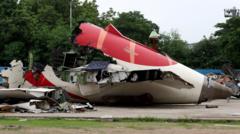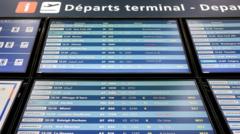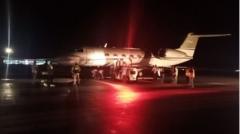On March 21, 2025, London’s Heathrow Airport, a crucial global travel hub, experienced a significant operational shutdown, causing chaos for travelers and airlines. This facility, which manages around 1,300 flights daily, was unable to handle incoming traffic, leaving 120 planes in route scrambling for alternative landing spots. While some aircraft managed to redirect to nearby airports such as Gatwick, others found sanctuary as far away as Amsterdam and Frankfurt, demonstrating the vast repercussions of this incident.
Ian Petchenik, the communications director for Flightradar24, highlighted the magnitude of disorder, stating, “a million moving pieces are all trying to get where they need to go.” Many passengers aboard flights bound for Heathrow had to pivot on their travel plans, with urgent demands for hotel accommodations and alternative routes. A flight from New York faced an unexpected landing in Reykjavik while another from Tokyo diverted to Helsinki, emphasizing the far-reaching effects of this airport closure.
In Taipei, a solo flight departing for Heathrow turned back midway after the news broke, further illustrating the unpredictable nature of air travel even outside the UK. With the shutdown expected to last for several days, the situation has triggered a global scramble within the aviation sector, as airlines grapple with the logistical nightmare of rebooking hundreds of thousands of passengers.
Officials indicated that similar circumstances have been seen in past international crises, most notably during the 2010 Icelandic volcanic eruptions, which grounded thousands of flights. As the current disruption unfolds, it serves as a stark reminder of the complexities within global air traffic and the immense impact local events can have on international mobility.
Meaghan Tobin, the business and tech correspondent for PulseWire, provides in-depth coverage of such unfolding issues, particularly within the Asia region.























